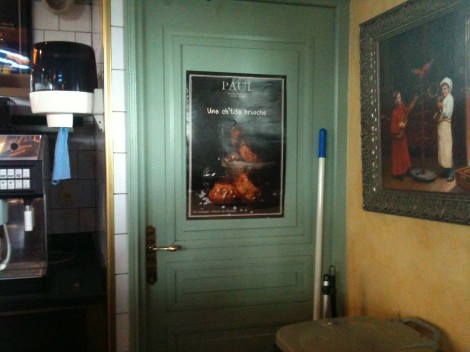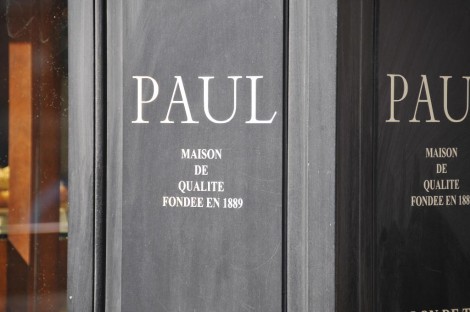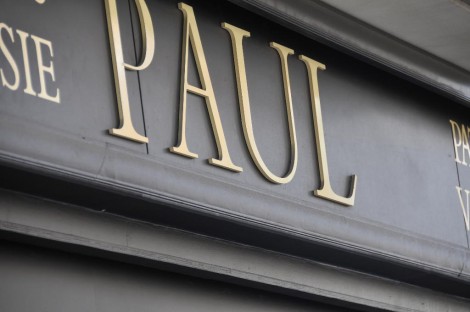Paul … an oasis of gastronomy in a culinary desert. Everything is made to remind you the long forgone past of tasteful products: sales point are covered with oak-like veneer, decorated with pieces of furniture that could fit in your grandmother’s interior. Even the door of the garbage room is painted in an artificially aged green lavish veneer. All those clichés work pretty well I must confess.
Paul is like a Starbucks. If you want to have an acceptable lunch (by airport standards for instance) you can be sure you’ll get it there.
So far so good. Parasuraman and Co. taught us that a good product is nothing without a good service and that it directly influences satisfaction. Until now you shouldn’t have learned a lot. Here starts my story. On October 10th, at around 1:30 pm I’m at Paul at the Charleroi airport (sorry, I should have written “at Brussels South airport” to comply with Ryanair’s terminology). A client next to me seems to wait for a long time on the warm dish she had ordered. Twenty minutes of patience later and after a not-so-friendly reminder to the cashier, her dish is finally served … but not warm enough. Nothing but usual you’ll say. It happens millions of times every single day. Until she calls the cashier to complain. The cashier arrives and asks what’s happening. She tells him that she’s unhappy because she had to wait 20 minutes for a dish that is not warm. The cashiers smiles and yells loudly at his colleagues: “an unhappy lady wants to talk a representative”.
Two employees came and while they were approaching I saw on their faces that they were not willing to apologize but rather to fight it out. A useless discussion followed where the two employees ignored the complaints of the client and rather defended themselves than showed empathy. The employees eventually shrug their shoulders and returned to their work, laughing at the client and without a word of excuse.
My take:
Bad service, bad complaint management (or absence of complaint management), a huge gap between the brand image and the image conveyed by the employees. Everything was wrong in this client’s experience (even the product that she eventually threw in the bin without eating it). I could stop here but you wouldn’t have learned anything because this situation happens millions times per day around the world. My take today will be to give you an insight on how to understand the two employees’ behavior. The well-known Mannheim (Germany) University Professor of Marketing Christian Homburg published in 2006 the firs research on this topic in the Journal of the Academy of Marketing Science. His paper was published in this very serious journal under the attractive title “See no evil, hear no evil, speak no evil: a study of defensive organizational behavior towards customer complaints”. Homburg introduces his concept of DOB (“Defensive Organizational Behavior”) and sees three explanations for employees’ resistance to accept and deal with complaints : 1) isolation which refers to keeping a psychological distance from unpleasant issues, 2) denial which refers to refusing to recognize threatening facts, and 3) projection which is the rejection to accept one’s own bad traits and faults.
Keep this in mind the next time you go to Paul.
Posted in Marketing.


